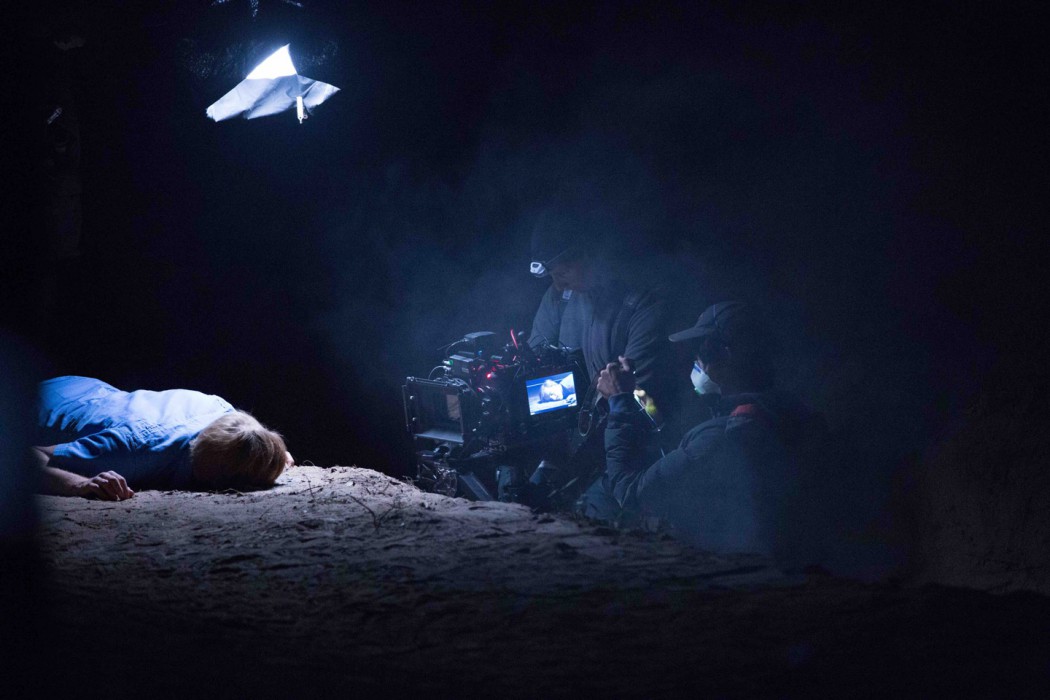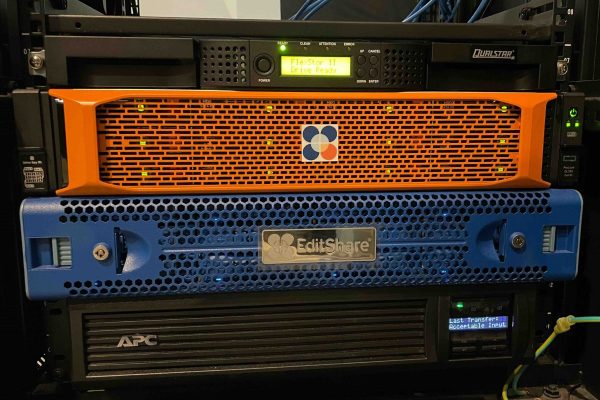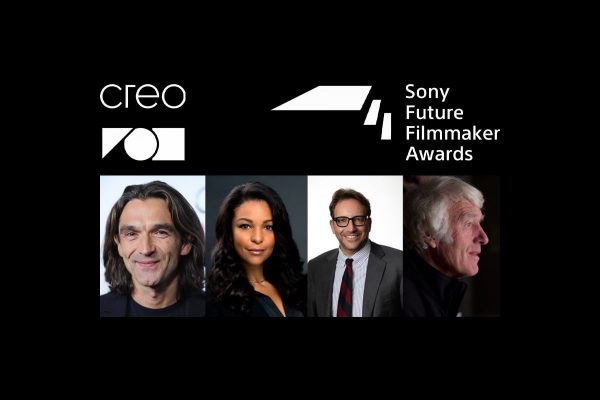Shooting a feature film in the Aussie outback was never going to be easy. Adding to that a significantly tight shooting schedule and the fact that much of the film is shot hand-held has made it an almost Herculean task for the production’s DP Robert Morton and his camera crew.
The film The Pretend One, directed by Tony Prescott, tells the story of Charlie (Geraldine Hakewill), a young woman facing the challenges of life in rural Australia whilst still being accompanied by her imaginary friend from childhood. The film is produced by Prescott, alongside co-producer Dinusha Ratnaweera and also stars Michael Whalley, Benedict Wall and David Field.
The film is also is the first feature length film shot with Sony’s PXW-FS7 cameras, and it involved a range of difficult shots. Including a number of VFX elements, from green screen to sky replacements that had to be accounted for when choosing which camera to shoot with.
Discussing the camera needs for the production, Morton said:
“Our shooting schedule was ambitious and given the limited amount of shoot days for the production phase, we employed a two-camera setup for a lot of scenes. This allowed us to get the coverage we needed quickly. Primarily, we wanted a camera with a cinematic look that was more lightweight and less cumbersome than other cameras on the market. We also required a camera system that could record off speed, shoot low light or natural light and work quickly in changing lighting conditions and needed to be able to switch between PL primes and EF zoom lenses for particular shots.”
Morton and his crew used two FS7 cameras during shooting, adding, “We set the cameras up in full production mode; matte boxes, remote focus, remote video and audio, Vlock battery plates, PL Zeiss MK3 Super Speeds. We also employed a ¼ glimmer glass that gave the images a soft edged, blooming highlight with a rich image. The cameras were employed for a wide range of coverage including handheld, Steadicam, dollies, car (and tractor) rigs.”
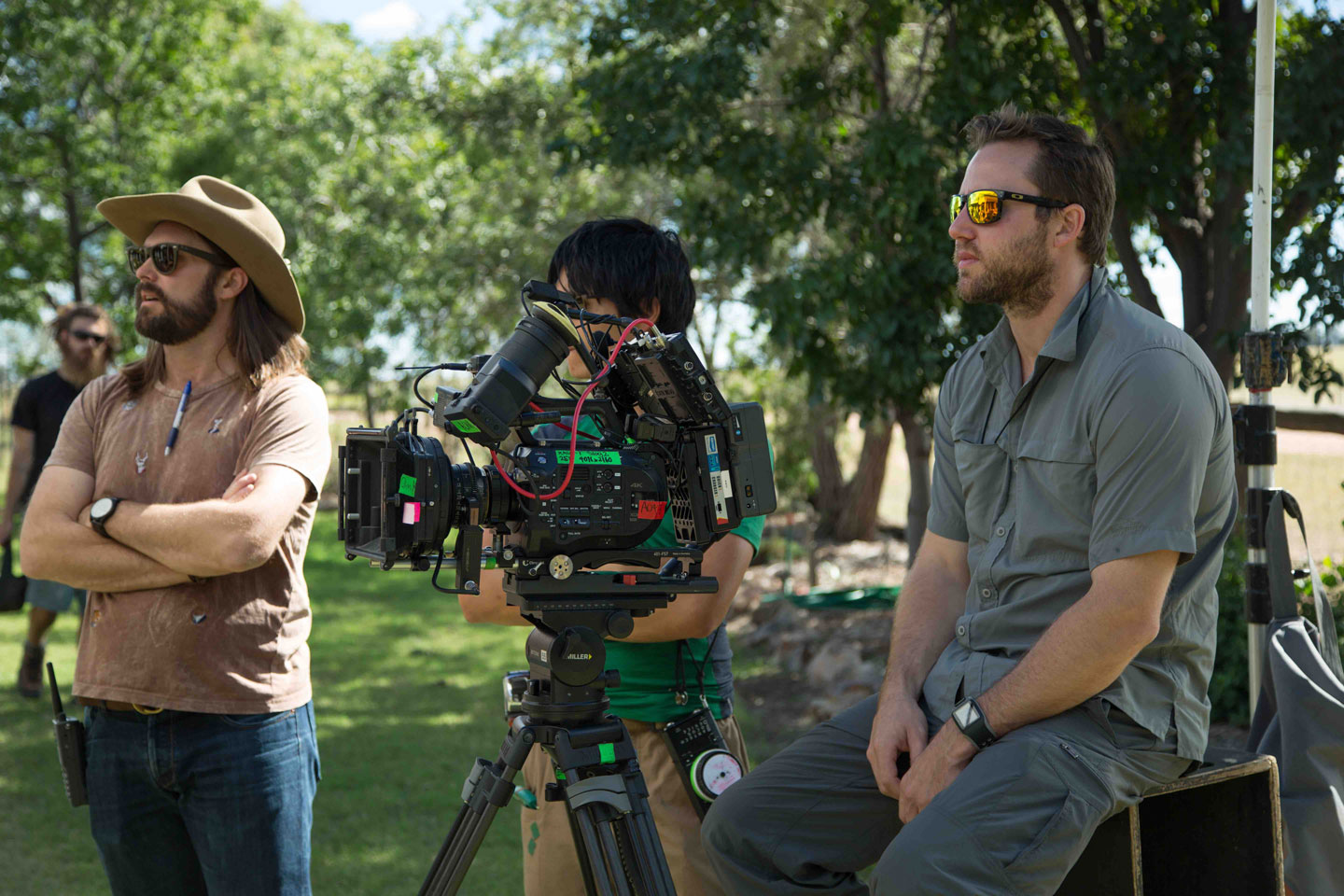
Sony FS7 cameras on the set of ‘The Pretend One’ (image supplied).
During principal photography, the crew and camera’s were put to the test, shooting all day every day without a break.
Morton said, “The cameras didn’t fail once which was unbelievable. We were very agile and could shift setups really quickly saving us a lot of time on set. This also helped when transferring to Steadicam or a car mount. We wanted a camera that was 4K and capable of recording up to 60fps, had internal Neutral Density filters to minimise filter changes when exterior lighting conditions changed plus had good colour and a wide dynamic range. Also the Sony Alpha mount allows for many different lens mounting options, changing between different mounts quickly. The bit depth of the camera in conjunction with the slog2 produced really fine gradation in colour and contrast.”
The footage was recorded internally using the 4K XAVC–I codec as opposed to RAW, Morton explained his reasoning for this saying, “Though it would have been a preference to shoot RAW as I have done in situations where compression and colour subsampling were critical to the final result, we weighed up the benefits of shooting RAW for ‘The Pretend One’ and decided against it due to the data requirements. In saying that, the 4K XAVC-I 10bit 42:2 codec is a data efficient codec which holds up well with the slog2 gamma encoding.”
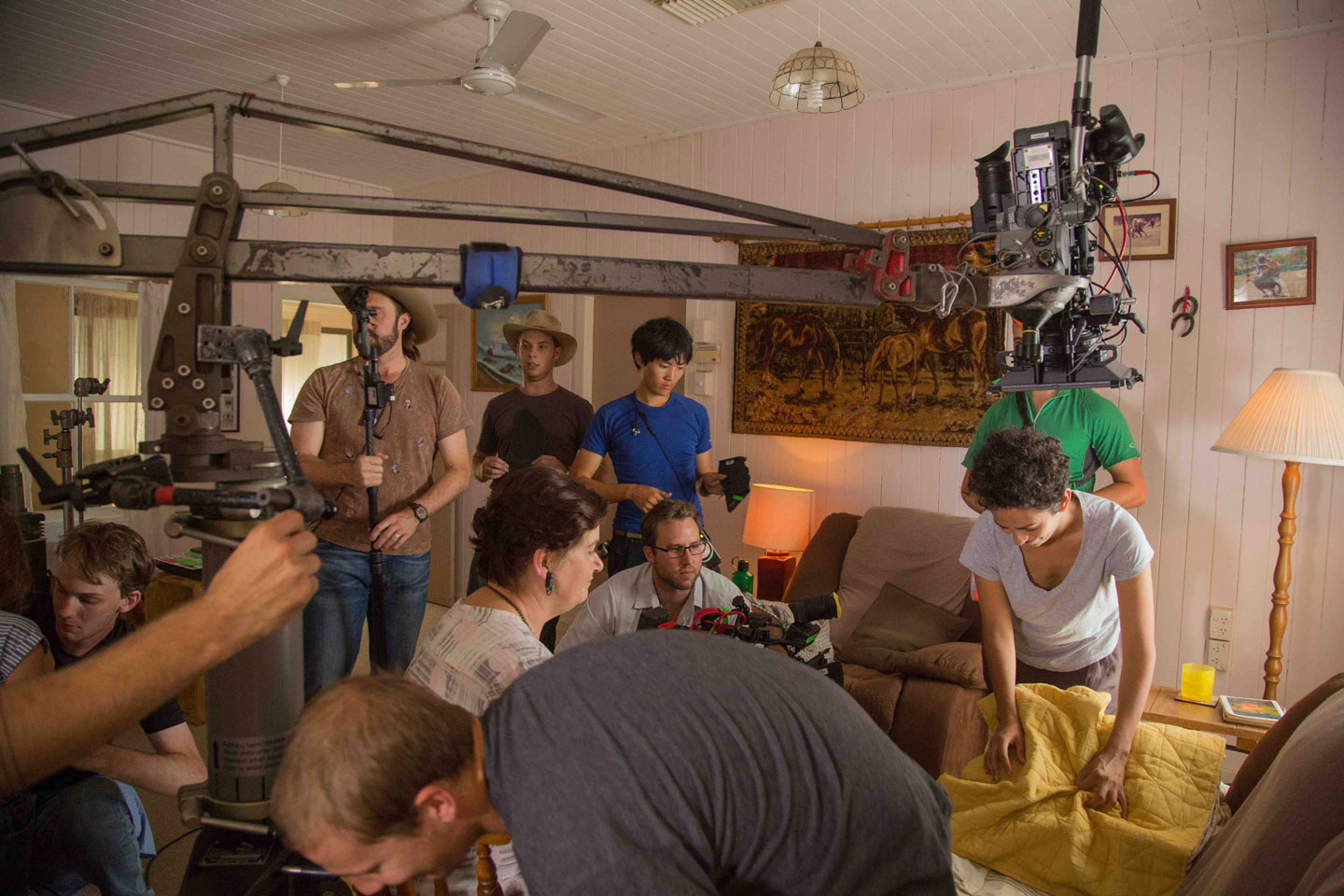
Sony FS7 cameras on the set of ‘The Pretend One’ (image supplied).
The film’s main set was on a magnificent cotton farm in rural Queensland, so Morton and his team shot a lot of broad sweeping exterior shots at varying times of day, with the interiors largely set in the locations old farm house and a classic rural pub situated in the area. Morton also shot across a full spectrum of coverage; long complicated Steadicam shots, wide planametric shots, car mounts, hand-held and composed dialogue scenes.
Due to the range of differing shots, it was important that the camera rendered dynamic range, colour, contrast and textures as, “This way we accurately and beautifully represented the landscape the characters inhabit. The majority of the film was shot hand held with the exception of car-mounted shots and some establishing landscapes and scene master wides to give a strong sense of place.”
Adding, “Some of the shoot days had up to ten minutes of screen time scheduled for the day and the ease of operation meant the time between setups allowed us to achieve all scheduled shots. Light sensitivity was also outstanding meaning that we could shoot in very natural low light whilst still having a lot of detail, this allowed us to the versatility of shooting well into last light on the epic sunset days. Shooting externals in daylight, there was always a lot of detail in the highlights and shadows whilst still keeping our image low contrast and beautiful.”
Clearly pleased with the choice of camera used in the shoot, Morton concluded, “There we’re no camera faults or malfunctions for the entire 19 day shoot which was amazing as these cameras were getting pushed all day in dust, cold and wet. Besides the obvious budgetary advantage, the FS7 offers a cinematic feel, that coupled with the MK3 Super speeds gave beautiful soft images comparable to the best digital cameras on the market.”
Other recent works by Morton include two 4K dramatic short films for the Australian National Maritime Museum inside the Onslow submarine and Vampire warship as part of their new $8 million installation at Darling Harbour, both shot on the FS7. He has also shot a variety of commercial, music video and documentary projects with the camera including the latest Nature’s Own brand campaign.
Watch the BTS video of The Pretend One shoot below.

